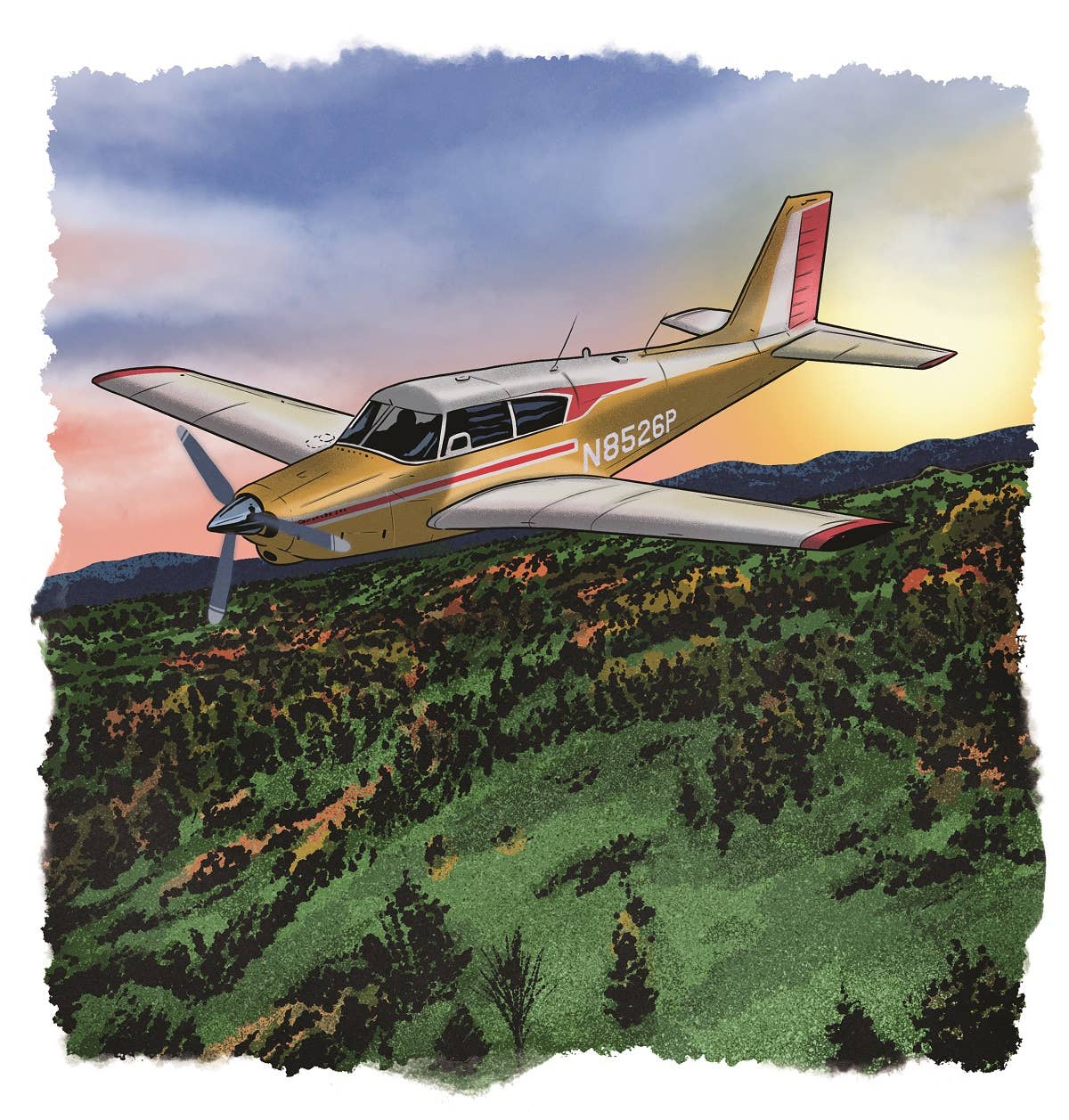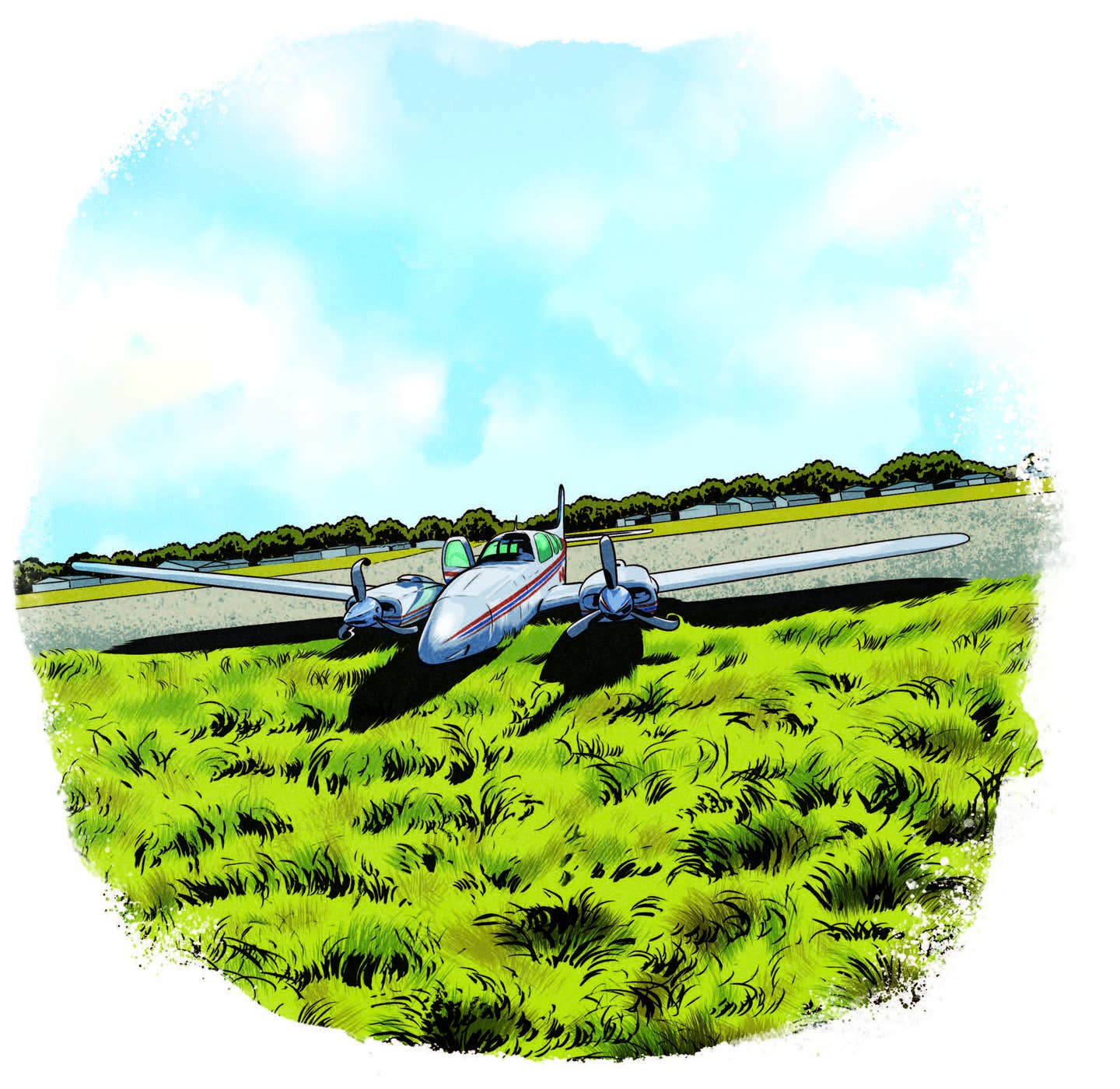Checklists Only Function When They’re Open
Pilot checklists are only good when used at the right time.

Checklists are only good when used at the right time. But how do you know when that is, and who checks the checklist checker? [Illustration: Joel Kimmel]
Early in 1974, my wife, Dorothy, and I had just moved from our home in Massachusetts to Appleton, Wisconsin, for my new consulting job. Since serving in the Air Force during the Korean War, I have had a lifelong interest in flying, so I was excited to realize I would be only a short drive to the location of the upcoming 22nd Oshkosh Air Show, which was to start on August 2. For many, arriving at Oshkosh, Wisconsin, is a rite of passage, attending what becomes, for one week, the busiest airport in the world. We had a week we’d never forget.
As we drove back home, I said to Dot, “It must be great to learn how to fly.” Dot said, “Why don’t you try it?” To which I replied, “No, I can’t. It would cost too much and take too much time.” So, there I was, two days later at Appleton International Airport (KATW) in the pilot’s seat of a vintage Cessna 150, clutching my student pilot certificate and taking my first flying lesson. In December, with my consulting work finished, we moved back to Massachusetts. After we resettled, I continued my flying lessons at Marlboro Airport (9B1). With its 1,659-foot runway bookended by extremely tall pine trees, there couldn’t be a better place to practice landings and takeoffs. I finally earned my private pilot certificate on May 14, 1975. After we got home, Dot and I held a proper champagne celebration. Then we had a serious discussion about flying, and I promised her that the one thing I would never do was buy an airplane.
If you're not already a subscriber, what are you waiting for? Subscribe today to get the issue as soon as it is released in either Print or Digital formats.
Subscribe NowBesides, renting would be fine. A month later, I was reflecting on that decision as I was sitting in the left seat of my newly purchased 1958 Piper Comanche 250 at Minute Man Air Field (6B6) with its 2,700-foot runway in Stow. Wow. My landings didn’t have to be precise at all, not after my Marlboro short-field training. In July 1976 with my flight hours adding up, and my wanderlust afoot, I thought it might be fun to try a cross-country flight in my “Baby Airliner.” What better destination than a trip to Oshkosh for another air show? At that time, Burt Rutan was selling his VariEze homebuilt kits to builders around the country—a composite, canard, high-performance aircraft. Burt would occasionally visit some of the builders to help them assemble the kits. There were three kits being built at Stow that would be flying to the Oshkosh show. We planned on meeting them there to see how well the airplanes performed. We had the privilege of working with Burt for a few days.
The Oshkosh show was scheduled to start on July 31, so we started planning for our big adventure. We were to be joined on the trip by Mal Bennert, a good friend of ours who was also a certificated pilot. We spent Saturday packing clothes and thoroughly preflighting the airplane, cleaning, topping the gas tanks, double-checking our checklists, planning the flight route, etc.
Later that afternoon, my son Bill and daughter Sharon dropped by to see how we were doing. Because it was early and a beautiful day, we asked if they would like to take a final sunset sightseeing trip before we left. It would include a stop at Manchester Airport (KMHT) in New Hampshire for the proverbial hundred-dollar hamburgers. It was probably a good thing that we took that flight because later, when I radioed my landing intentions, my second radio was dead. It was an emergency because I would not launch on this trip without both radios working. After we landed, I told our mechanic my problem. Fortunately, one of the local pilots said he had a radio he could lend us for the trip. We spent Sunday replacing and testing the radio. I slept soundly that night, and we left early Monday morning in kind of an overcast day.
- READ MORE: Leaving in the Chocks
Because I wanted to keep both tanks as full as possible, our first fuel stop was planned for Binghamton Airport (KBGM) in New York. We had been flying for about two hours, which put us over the Allegheny Mountains—not too hospitable on the ground. I was pilot flying for this first leg, and all was going well. Dot was in the back, reading a magazine, and we were just cruising along. Suddenly, I thought I heard a skipped cylinder from the engine. I asked Mal on the intercom if he heard that. He said, “Heard what? I didn’t hear anything.” I said, “Yeah, that nothing is the noise I’m talking about.” Just then, the engine coughed for a few beats then a few more until finally it went quiet. Nothing like a shot of adrenaline to liven up a dull morning. I wanted to start down the checklist for “Engine Power Loss During Flight,” so I said, “Mal, you’ve got the airplane.” He answered, “I’ve got the airplane.” I wanted to be free to check the obvious things that can stop an engine, the most likely being fuel starvation. The fuel selector was on the floor between the pilot and copilot. Looking down to move it would have taken my eyes off the horizon—not a good idea. I said, “Leave the flaps and gear up and trim for 100 mph.” Mal answered, “Flaps and gear up, trim for 100.” (For youngsters reading this, we were still using miles per hour back then.)
I looked down at the fuel selector, and it was positioned on the right tank, which was the correct one that I had selected before we left. I turned it to the left tank, pushed mixture to full rich, pulled carb heat on, and turned on the fuel pump. The prop was windmilling nicely, which was a good sign. The best sign, however, was the sound of the engine coughing twice, spitting a little because the carb heat was on, and then coming up to full power. “Now,” I thought, “pretend you’re a professional pilot. Just take a deep breath, wipe the sweat off your brow. Return all settings back to cruise. Continue with normal flight.”
- READ MORE: Why Do Pilots Use Checklists?
When we landed in Binghamton, I immediately dipsticked the right tank. It was dry as a bone. What had happened? As is so often the case, a series of small errors can result in a major problem. After we took the sightseeing flight Saturday, I had every intention of topping off the tanks when we returned, but I was totally distracted by the new problem—the dead radio. While working with that on Sunday, I completely forgot the needed gasoline, thus causing the right tank to be partially empty and run dry before my predicted time.
Is there a moral here to be learned? I don’t know. Checklists are only good when used at the right time. But how do you know when that is, and who checks the checklist checker?
This column first appeared in the August 2023/Issue 940 print edition of FLYING.

Sign-up for newsletters & special offers!
Get the latest FLYING stories & special offers delivered directly to your inbox







